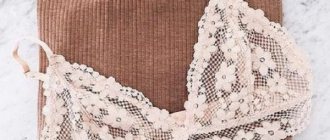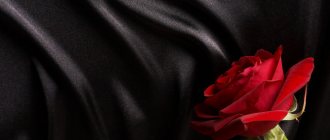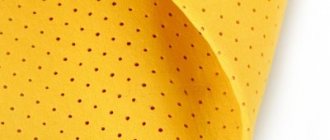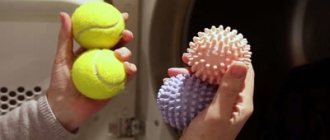Useful properties of soda in cleaning fabrics
Baking soda and soda ash can completely replace store-bought powders for people suffering from allergies. This fact helps to preserve nature, since aggressive substances from chemical cleaning agents negatively affect the condition of reservoirs and soils.
Sodium carbonate allows you to solve many problems that are always encountered when washing:
- remove stubborn stains;
- get rid of unpleasant odor;
- deodorize the material;
- bleach;
- make water and fabric softer;
- clean the automatic machine;
- multiply the effect of the powder.
Sodium salt in combination with powder helps soften the water and remove stains more effectively. It also produces good foaminess.
Sodium carbonate can make things softer if added during the rinsing process.
Baking soda will remove even difficult stains on clothes and inside the washing machine.
Washing clothes with soda in an automatic washing machine stabilizes the natural acidity level, which has a positive effect on the cleanliness of things.
Using it instead of powder can save money.
Soda ash has the best effect for making things white. Especially when washing in water with a high level of hardness.
How to prepare fabrics for bleaching
Stains on white always appear - as luck would have it, the collar of a shirt gets rubbed, kitchen towels get dirty very quickly, nasty yellowing forms under the armpits of blouses, and after several washes bed linen loses its original shine. Don’t rush to give up your favorite but damaged white clothes - they can be saved without even going to the dry cleaner.
You may be interested in: How to clean an automatic machine with soda from scale, mold and dirt - preventive measures
Things need to be prepared for bleaching. First, try the chosen method on a small area of fabric to understand how it reacts to soda with additives. In the meantime, check out the proven washing rules:
- Very dirty items should be pre-soaked in washing powder for several hours.
- Study the labels on clothing - there is useful information about what means and techniques are contraindicated.
- Never wash white clothes together with colored ones, even if you think they won't fade.
- Try not to boil things often, as this will make them lose their strength and appear old. Do not bleach the fabric every time you wash it.
- If possible, dry white items in the sun.
- Bleach fabrics of different compositions separately.
What types of dirt can be removed with soda?
Baking soda is an all-purpose bleach. It helps give a fresh look to yellowed and grayed things. Also removes the following types of stains:
- alcoholic drinks;
- blood;
- fat;
- grass;
- sweat;
- paint;
- iodine, etc.
Sodium carbonic acid cleanses workwear well. It removes traces of fuel oil, gasoline and paraffin without difficulty.
Employees of catering establishments keep a pack of powder nearby to quickly get rid of traces of sauce, cream, etc.
Operating principle
When hydrogen peroxide comes into contact with the skin, it begins to break down into two components - water and oxygen. A chemical reaction occurs, due to which the pigmentation layer gets burned and begins to break down, causing the skin to become clearer. Baking soda additionally has an exfoliating effect and helps cleanse the skin of residual subcutaneous fat and dead pigmentation cells. The purposes of using a mask from a combination of two folk components are as follows:
- elimination of age spots, rashes, pimples, blackheads, acne and other cosmetic defects;
- prevention of premature appearance of wrinkles;
- freckle whitening;
- the appearance of a healthy glow and even out the tone of the face;
- deep cleansing of pores.
Hydrogen peroxide creates an immediate effect. After the first use for cosmetic purposes, the skin becomes noticeably smoother and more well-groomed. But you cannot use it in a single and undiluted form; be sure to use it only in combination with soda and other auxiliary components. Otherwise, there is a high risk of a chemical burn to the skin.
What types of fabrics can you use baking soda with?
- Sodium carbonate exhibits its properties best when washing clothes made from natural fabrics - linen and cotton. This makes it an ideal tool for cleaning quickly soiled home textiles - tablecloths, towels, bed linen.
- Woolen and silk materials cannot be bleached with soda, as they do not tolerate an alkaline environment. In it, fabrics become rigid and quickly lose their attractive appearance. It is impossible to predict the effect of alkali on synthetics, so it is better not to take risks. These items can be easily washed with standard detergent.
It is prohibited to use sodium salt for rubberized and impregnated materials, leatherette and membrane surfaces.
Soda ash is freely used for colored products, but in small concentrations. Maximum permissible norm: per 10 liters of water - 5 tbsp. l. powder. The liquid should be of moderate temperature - up to 40 degrees.
How to use baking soda and peroxide
Bleaching white clothes with hydrogen peroxide and soda has its own rules. Despite the fact that the products are considered universal and suitable for all things, there are subtleties in their use on different fabrics.
Linen and cotton
These are the most unpretentious materials that can withstand even the aggressive effects of bleaches and high temperatures. There are several recipes for them:
- Pure peroxide. Already washed items are soaked in warm water with the addition of hydrogen peroxide (at the rate of one teaspoon per two liters), left for 20 minutes, and rinsed with clean water.
- Boiling with powder. This recipe is applicable exclusively to cotton. Helps get rid of difficult stains, popular among lovers of white kitchen textiles. The products must first be kept in a warm soda solution (at the rate of one teaspoon per liter of water), then boiled in an enamel bowl with washing powder. Cooking should last half an hour, accompanied by regular stirring and turning of the tissues.
- Products to combat sweat marks. Here the recipes for linen and cotton are different. Linen is washed in a machine with soda ash at a temperature of 70 degrees, then the washing is repeated with traditional means. Cotton is processed locally: peroxide is applied to the stains, left for up to five minutes, then the clothes are rinsed in cool water. Sometimes the procedure has to be repeated.
There are several tricks to working with linen and cotton. When using soda ash, do not add any more washing or bleaching products to the machine. Purchase special tongs for turning boiling laundry. Turn the cloth soaked in peroxide every five minutes.
Linen and cotton fabrics are refreshed without adding any additional ingredients.
White synthetic
Caution is required when working with artificial materials. Washing should not be done at temperatures above 40 degrees, and sodium bicarbonate and peroxide should not be used in concentrated form; more gentle solutions are needed. Compositions for whitening synthetic items at home with the addition of soda and peroxide:
- Soda-ammonia composition. At low temperatures, ammonia will help enhance the effect of soda. Synthetics need to be soaked for three hours in water diluted with soda (one tablespoon per liter) and ammonia solution (tablespoon per five liters). Afterwards, the items are rinsed and then washed in the usual way.
- Peroxide dissolved in water. This recipe will help remove rust from tap water. You need to soak the synthetics for two hours in a mixture of ten liters of water and 200–250 milliliters of peroxide. Afterwards, it is better to rinse the item and wash it by hand, do not twist it, and dry it at room temperature (never in the sun).
- Peroxide with soda is an alternative option for whitening at low temperatures. Add 30 ml of peroxide and two tablespoons of soda ash to a bucket of water. Soaking time before washing is no more than half an hour.
Fact! Resuscitation of white synthetics damaged by improper washing is almost impossible. If the item has become faded or pellets have appeared on it, it will not be possible to restore its original neat appearance.
Wool and silk
Animal fabrics are particularly sensitive to bleaches, so extra precautions are required when working with them. The peroxide solution should not be stronger than two percent, only baking soda is used, and the water temperature should not exceed 40 degrees. In addition, after completion of processing and washing, items must be rinsed again with the addition of table vinegar.
Bleaching, washing and rinsing wool and silk products should be carried out in water of the same temperature, then the textiles will not shrink.
There are delicate recipes for bleaching natural animal fabrics:
- In five liters of water you need to dilute a tablespoon of detergent for delicate washing, four times as much salt, a spoonful of peroxide and ammonia solution. Things need to be soaked in the solution for two hours, then rinsed first in clean, then in acidified water. Finally, wash gently and dry at room temperature.
- The cleanliness of white wool can be maintained for a long time by immersing items in an aqueous solution of baking soda for a quarter of an hour before each wash. To prepare a prophylactic agent, ten grams of soda powder are added to each liter of warm water.
- Bleaching of animal tissues can be done in a cool aqueous solution of weak peroxide. The pharmaceutical drug is diluted with water in a ratio of one to eight. The soaking period should be between five and ten hours. Afterwards, the textiles are removed from the container and dried at room temperature without additional washing.
Precautionary measures
- The powder has a strong fat-soluble and dehydrating effect, so in high concentrations it can form an alkaline burn. From contact with it, the wound begins to burn and sting.
- Alkali dries the skin, so rubber gloves are needed when working with it.
- The pack is stored tightly closed away from food products, in a dry place (to avoid lumps and caking), inaccessible to children and pets.
- The higher the temperature of the liquid, the more active the substance is. The same amount of sodium carbonate, which was comfortable to wash with in cool water, can cause irritation in hot water.
- Sodium carbonic acid belongs to the third hazard class. It is used with caution in rooms with high humidity.
What not to do when removing a wine stain
To avoid spoiling your item, follow our tips:
- Do not wash the item in hot water if this is prohibited according to the instructions. The stain will disappear, but the product will be damaged.
- Do not use a stain remover that is not designed to remove organic stains. Due to the wrong choice of product, the pigment will be firmly ingrained into the fabric, and it will be impossible to remove it.
- Do not throw away a newly soiled item, hoping for dry cleaning or “magic” remedies. Fresh traces are removed faster than old ones.
- Do not apply compounds directly to the front side of the product. Test on an inconspicuous area - it is unknown how the fabric dye will react to the stain remover. To avoid damaging the item, test the cleaning composition on the inner seam or a sample of the material.
Ways to use soda in washing
Advice. Soda ash can be replaced with baking soda, increasing the amount by approximately 5 times.
Boiling
Have to take:
- warm water - 5 l;
- sodium carbonate - 3 tbsp. l.
A solution is prepared from the components in which the product is boiled for half an hour. If the contamination is too persistent, then it is first soaked. After boiling, the fabric is rinsed or washed.
Soaking laundry with soda for difficult stains
First, the product is soaked for several hours in a weak soda solution. Next, a soap composition is made to repeat the procedure.
You will need (for 1 kg of things):
- water - 10 l;
- laundry soda - 8 g;
- soap 40% - 5 g.
The alkali is dissolved in one liter of hot water and transferred to a basin. After 20 minutes, a separately prepared soap composition from the remaining components is poured into it. Things that have been strongly wrung out after the previous action are placed in the container.
With ammonia
You will need:
- water - 5 l;
- sodium bicarbonate - 5 tbsp. l.;
- ammonia - 2 tbsp. l.
Method No. 1
All components need to be combined in a bowl and mixed thoroughly. The product is soaked in the composition for several hours. Then it is rinsed using any convenient method. It is used for removing soda stains from light-colored items or for bleaching.
Method number 2
To combat the unpleasant yellow tint, the solution is prepared in the same way. The item is first soaked and then boiled in this solution for about half an hour.
With vinegar for stubborn stains
Using sodium carbonate with vinegar is a good method for dealing with stubborn stains not only on fabric, but also on carpets and any other textiles.
Sprinkle a little baking soda on the dirt and soak it in vinegar. The mass is ground, starting from the center and moving towards the edges of the contamination. Next, you need to wait until the fabric dries and rinse.
Delicate items should not be cleaned using this recipe.
Bleach with hydrogen peroxide
Required:
- H2O - 3 l;
- baking soda - 2 tbsp. l.;
- hydrogen peroxide - 1 tbsp. l.
Peroxide is mixed with water, then sodium bicarbonate is poured into it. Soak the fabric in the resulting liquid and leave for half an hour. The composition is stirred every 5 minutes.
The recipe is suitable for all natural and synthetic types of fabrics, except wool and cashmere.
How to whiten socks with soda.
Scented gel with soap
Option #1
Components:
- water - 1 l;
- laundry soda - 45 g;
- soap shavings - 50 g;
- essential oil with your favorite aroma - 2-3 drops.
Water is placed on the stove and brought to a boil. At this moment, crushed soap is poured into it and dissolved. Next, sodium carbonate is added. As a result, the liquid will thicken and take the form of pearlescent jelly. The flavoring is dripped after the mixture has cooled.
Can be used for all types of washing.
Option No. 2
Compound:
- soap shavings - 100 g;
- soda ash - 100 g, or baking soda - 500 g;
- H2O - 1.5 l;
- essential oil - 2 drops.
The water is allowed to boil and removed from the stove. Soap is dissolved in it, and then the powder. After cooling, add oil.
Gel according to Fischer
Required:
- water - 4 l;
- soap - 150 g;
- calcined sodium carbonate - 200 g;
- borax - 200 g.
The soap is grated and poured into hot water and stirred until completely dissolved. Calcified powder is poured into the liquid and mixed, then the same is done with borax.
The finished composition is poured into convenient containers, such as bottles. For 1 wash, it is enough to take two measuring spoons.
Washing powder with borax
Have to take:
- laundry soap - 200 g;
- calcined powder - 200 g;
- borax - 200 g.
The soap is rubbed and combined with the other ingredients. They are placed in a food processor where they are mixed thoroughly.
The finished product is poured into a jar and stored under a closed lid. For one wash take 1-2 tbsp. l. facilities.
Principles of whitening with soda and peroxide
Before you bleach white things at home with soda and peroxide, you need to choose the appropriate option from more than ten recipes for different fabrics and their contaminants. Hydrogen peroxide (the ancestor of oxygen-based anti-pollution products) copes with the task adequately and, unlike many store-bought products, it does not harm the fibers.
Note! You can use the products on “fresh” clothes that are not stretched, worn out, or damaged by aggressive chemical compounds.
The whitening duo is suitable for many types of fabrics, including:
- linen;
- denim and cotton;
- synthetics;
- natural silk;
- wool and cashmere.
The solution is suitable for treating any clothing, home textiles, bedding and underwear, as it does not cause allergies or irritation to the skin. The product will help make things snow-white, eliminating yellowness, grayness, stains and faded areas.
Reviews
Galina, 48 years old. I make a gel from laundry soda and Antipyatin. It is convenient to use when washing in a machine; I add it directly to the drum.
Daria, 35 years old. I put a wine stain on my white blouse. I decided to try to remove it with peroxide and soda. I left the mixture overnight, washed it in the morning, and the blouse was like new.
Anastasia, 41 years old. I completely replaced the powder with a homemade one made from soda and soap. It is very economical and washes better than all store-bought products.
How to bleach sneakers and sneakers with soda.
How to remove red wine from things of different colors
Almost any bleach is suitable for white fabrics. You need to be careful with colored and black clothes - you can wash off the paint and leave an unsightly stain. How to remove red wine stains from different clothes, read below.
White
For boiling white, milky and beige fabrics, use citric acid or natural juice, salt, and boiling water. Wash light-colored items with laundry soap, oxygen bleach, or gel-like “Whiteness.” Either method will be effective if you start cleaning the wine stain immediately after spilling the drink.
Colored
Vinegar, salt and laundry soap are suitable for cleaning bright and colorful things. You can also combine one egg yolk with the same volume of glycerin, shake the ingredients and leave for two hours. After this, rinse the item in water at room temperature.
Black
For dark fabrics, ammonia, laundry soap, or store-bought stain removers labeled “for black clothes” are suitable. Black textiles are soaked entirely to prevent light stains from appearing.
How to bleach white things with ammonia?
Ammonia is an excellent ingredient for a bleach solution. Usually it is not used as an independent remedy, because it can be most effective in combination with soda.
In order for grayed and not entirely new things to acquire their former whiteness, it is necessary:
- pour 5-7 liters of water into a basin
- add a few tablespoons of regular baking soda
- mix everything well
- pour just a little ammonia
- dip things into the previously prepared solution
- leave them in the solution for several hours
- then wash them as usual
- rinse very well
- dry under ultraviolet rays
This is a truly effective method that has been tested by time, the main thing is that the things that you decide to bleach are not made of too thin fabric, because the components of the solution can affect their strength and even contribute to their “corrosion.”
In what cases is it permissible to add, and when should it not be done?
The use of baking powder is justified in the following cases:
- elimination of unpleasant odors - for example, cigarette smoke;
- enhancing the whitening effect;
- softening the hardness of water - the more ideal its balance, the better the item is washed;
- disinfection in situations where the use of other agents causes an allergic reaction;
- Instead of conditioner, baking soda will provide excellent softness to your laundry.
You should not use baking powder if:
- the composition of the fabric does not tolerate any aggressive influence - usually this information is indicated on the label of the item;
- the material fades.
Read about how to use washing soda in the washing machine and by hand here.
Antiseptic properties
Soda destroys pathogens, mold, bacteria and microscopic algae; if you use it for washing in an automatic machine, then fungus will not grow in it and there will be no musty smell.
If mold appeared earlier, then you need to wash all accessible parts of the machine with washing gel based on laundry soda, the recipe for which can be read above, do not forget to bend the rubber seal on the door and wash it well under it, and also run the machine idle at maximum temperature with a glass the same gel. Borax combined with soda ash is very effective against mold. This product is also useful for removing mold from tiles.
Soda ash is used for disinfection in enterprises where there is a high risk of workers becoming infected with infectious diseases, for example in hospitals, catering establishments, the leather industry, veterinary medicine and agriculture. Hot solutions of sodium carbonate are used to treat surfaces, disinfect counters, warehouses, cheese factories, and boil tools and special clothing. The hotter the water, the greater the bactericidal properties of the solution.
- An 80 degree 2-3% soda ash solution kills the foot and mouth disease virus within an hour. It deals with streptococci in 10 minutes, and with E. coli in 5 minutes.
When working with hot solutions, it is very important to follow all safety measures, wear rubber gloves and safety glasses.
What can't be cleaned with soda ash?
Sodium carbonate is considered unsuitable for use in the following cases:
- for washing clothes made of delicate, thin fabrics: silk, wool. They will become rough and lose their original appearance;
- for washing membrane products, since the protective qualities of this material will be completely lost;
- for cleaning aluminum dishes;
- for washing suspended ceilings and fiberglass ceiling tiles;
- for cleaning wooden floors, parquet or laminate.
These things and surfaces do not tolerate contact with an aggressive alkaline environment.
What we don't recommend
We have studied many methods for bleaching towels, not only theoretically, but also practically. The methods described above were tested successfully, but we dare not recommend soaking in a solution of potassium permanganate and mustard for white towels.
After such treatment, snow-white fabrics acquired a dirty tint (after potassium permanganate - grayish, after mustard - yellowish), as a result they had to be additionally boiled in bleach with chlorine. And this is not a very desirable option for a thrifty housewife.
Follow the right tips and your kitchen will be sparkling clean.
How do you like the article?











